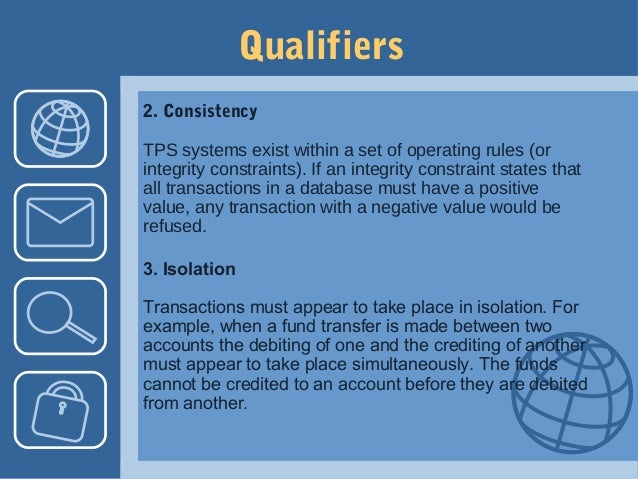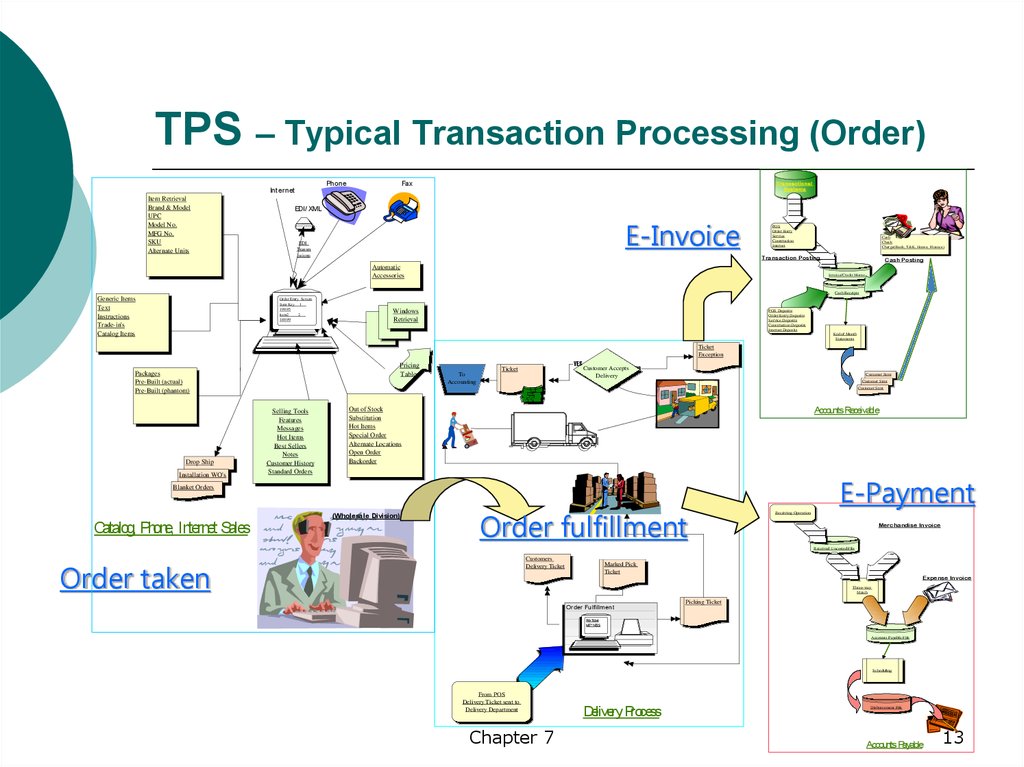

If sufficient inventory is on hand and the customer’s credit rating is acceptable, a sales order, which is the output from the system, is produced by the program. Input function Accept customer order data Processing function: check inventory quantity Check customer credit Output function: produce sales order Storage function: Storage customer order data Access inventory master data Access customer order dataĢ3 The purpose of an order entry system is to accept customer orders for goods and services and to prepare the orders in a form that can be used by the business. Order entry Sales configuration Shipment planning Shipment execution Invoicing Customer relationship management (CRM) Routing and scheduling Scheduling systems For example, orders taken over the phone may be entered into the system, but not processed until a slow time, such as at night.ġ6 Batch versus On-Line Transaction Processingĭata collection Should be collected at source Should be recorded accurately, in a timely fashion Data editing Data correction When online entry with delayed processing is used, data is input as the transaction occurs and is stored online, but files are not updated. A person enters the data for a transaction into a system, where it is processed and the output is received before the next input is entered The drawback to OLTP is the high costs associated with the necessary security & fault tolerance features. Files are always current when online processing is used. Online transaction processing is interactive & each transaction is processed as it occurs. Good for some applications, such as processing end of semester grades or payroll, it is unacceptable for others, such as financial transactions. The biggest problem with batch processing is that the master file is never current. This was normally done at regular intervals, such as every hour, day, or week. Data for all transactions to be processed is brought together and processed in a group (Payroll). Processing functions involve the manipulation of data, including computation and decision makingġ2 Traditional Transaction Processing Methods & Objectivesīatch processing systems On-line transaction processing (OLTP) On-line entry with delayed processing Process data generated by and about transactions Maintain a high degree of accuracy and integrity Produce timely documents & reportsĪll transactions for a period of time would be collected in a group (called a batch), input & processed as a unit.

Input functions include capturing data on a source document, entering the input data into the system, and checking input data for errors, a process called data validation Output functions include producing screen or paper reports, such as detail reports, summary reports, and exception reports.ġ1 Storage functions include storing data in files and databases, accessing stored data, sorting stored data, and updating stored data.
#Examples of transaction processing system update#
Input function Capture input data Enter input data Validate input data Processing function: perform computation make decision Output function: produce screen output print output Storage function: stored data Access data Update dataġ0 Transaction processing systems perform input, output, storage, and processing functions. Finally, when inventory is low, the system produces output that causes more inventory to be ordered, which is another type of business transaction.ĩ Transaction Processing System Functions Periodically, the system prints a list of the shipments and receipts - that is the transactions that have occurred.Ĩ It also prints a report giving the quantity on hand for each item in inventory, which is a characteristic of the state of the business. When items are shipped or received, the state of the business is affected, and the inventory control system makes changes about the inventory in the stored records. TYPE : Operational-level INPUTS : transactions, events PROCESSING: updating OUTPUTS : detailed reports USERS : operations personnel, supervisors DECISION-MAKING: highly structured EXAMPLE: payroll, accounts payableħ Example of TPS An inventory control system keeps a file of records about the stock of goods that a business has on hand (the inventory) which is one aspect of the state of the business. TPS, MIS, DSS, and AI/ES Hierarchy: Information AI/ES Less More Less More DSS Sophistication & complexity of processing & analysis Decision support Input & output Routine MIS TPS Data More Less More Less

Keep records about the state of the organization, to process transactions that affect the records, to produce output that reports on transactions that have occurred,ĥ Sophistication & complexity of processing & analysis Computerized system that performs and records the daily routine transactions necessary to conduct the business these systems serve the operational level of the organizationĤ The purpose of a transaction processing system (TPS) is to:


 0 kommentar(er)
0 kommentar(er)
